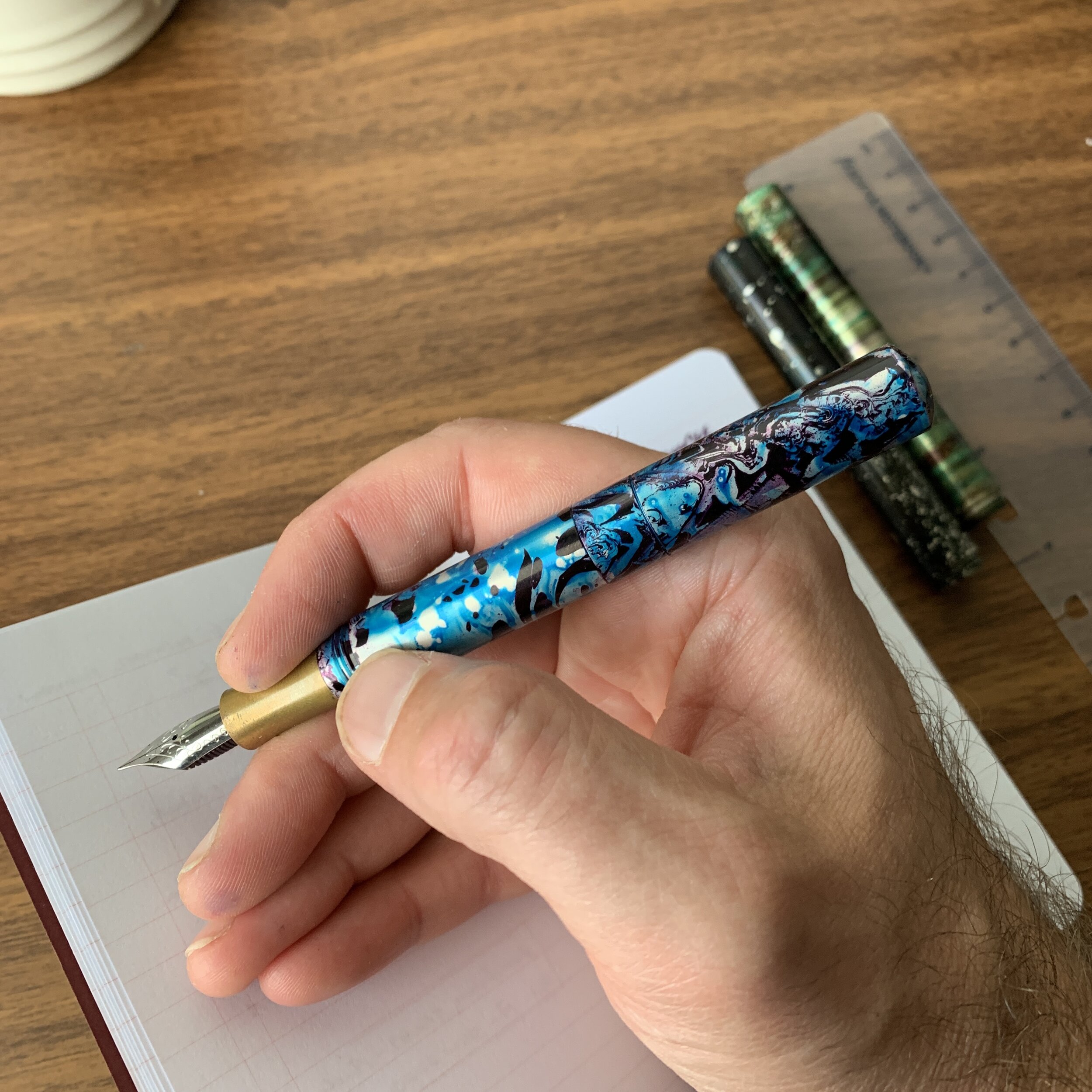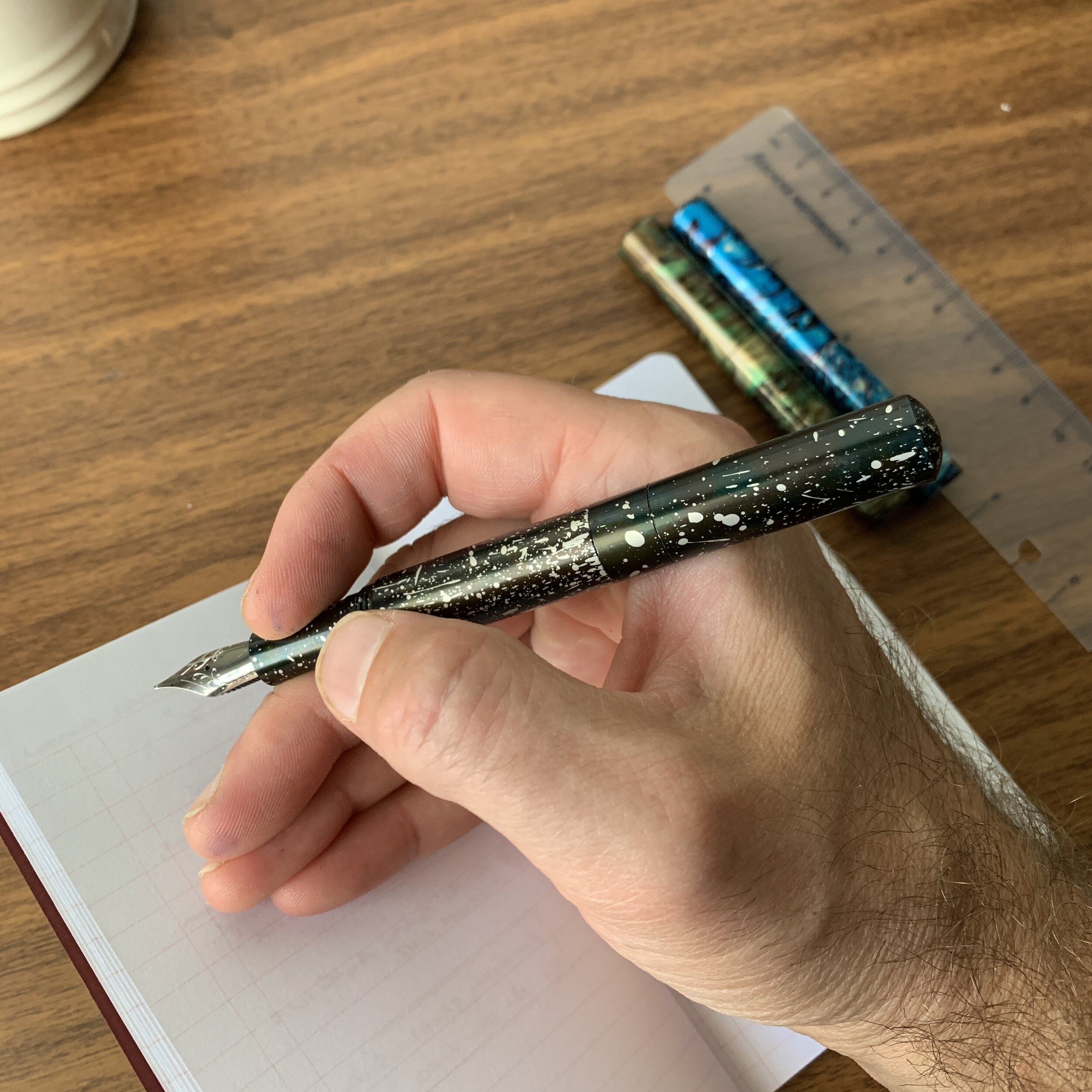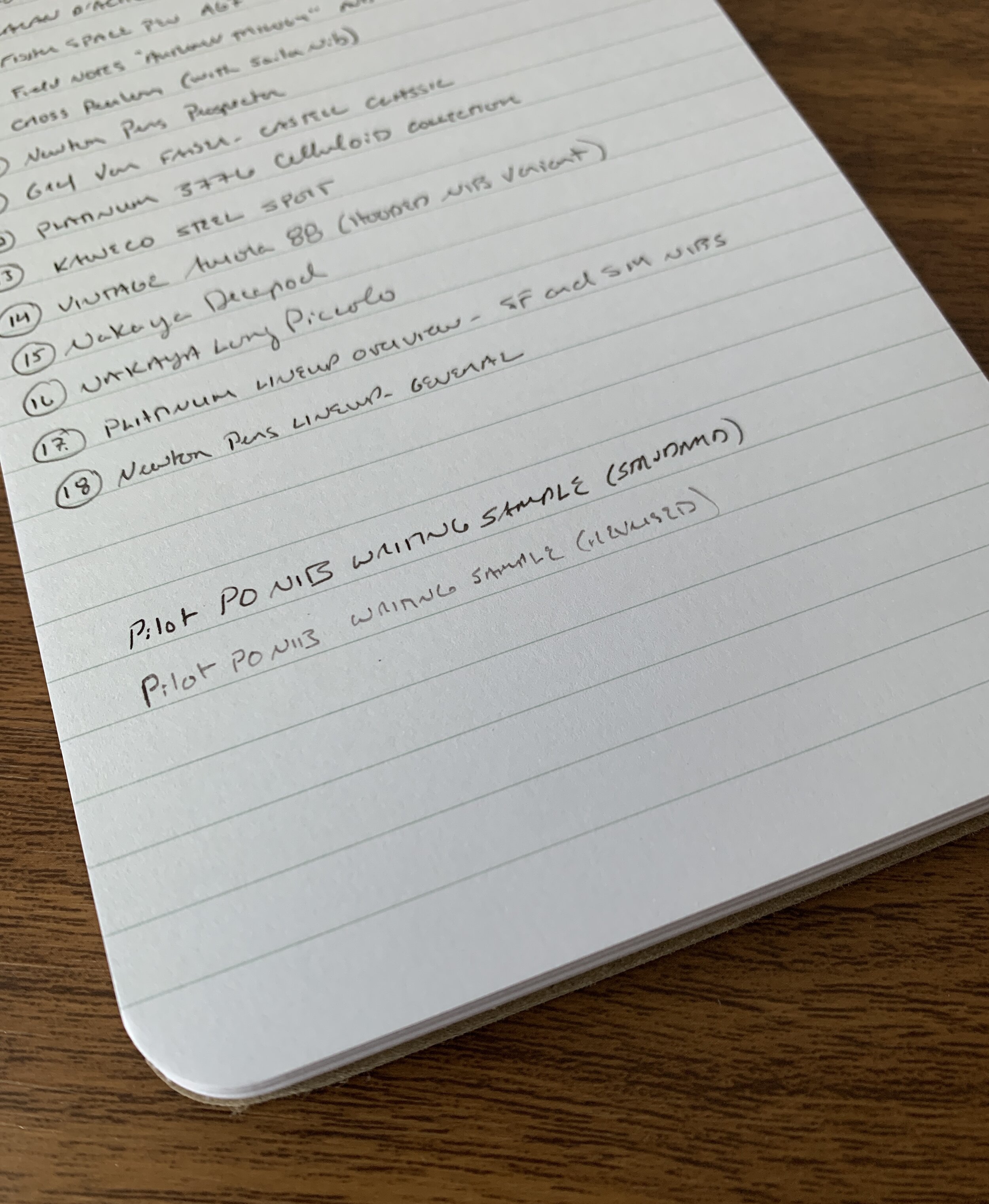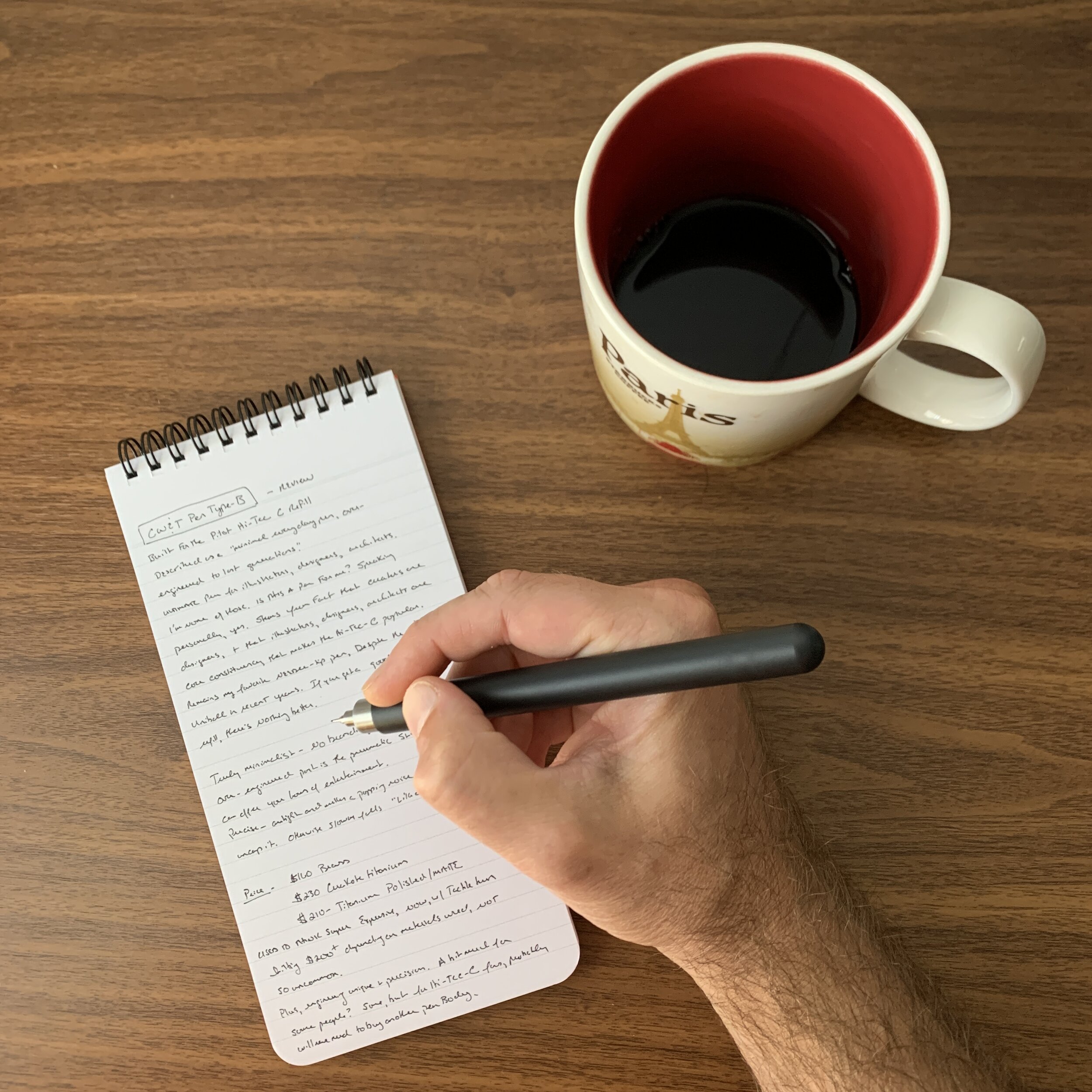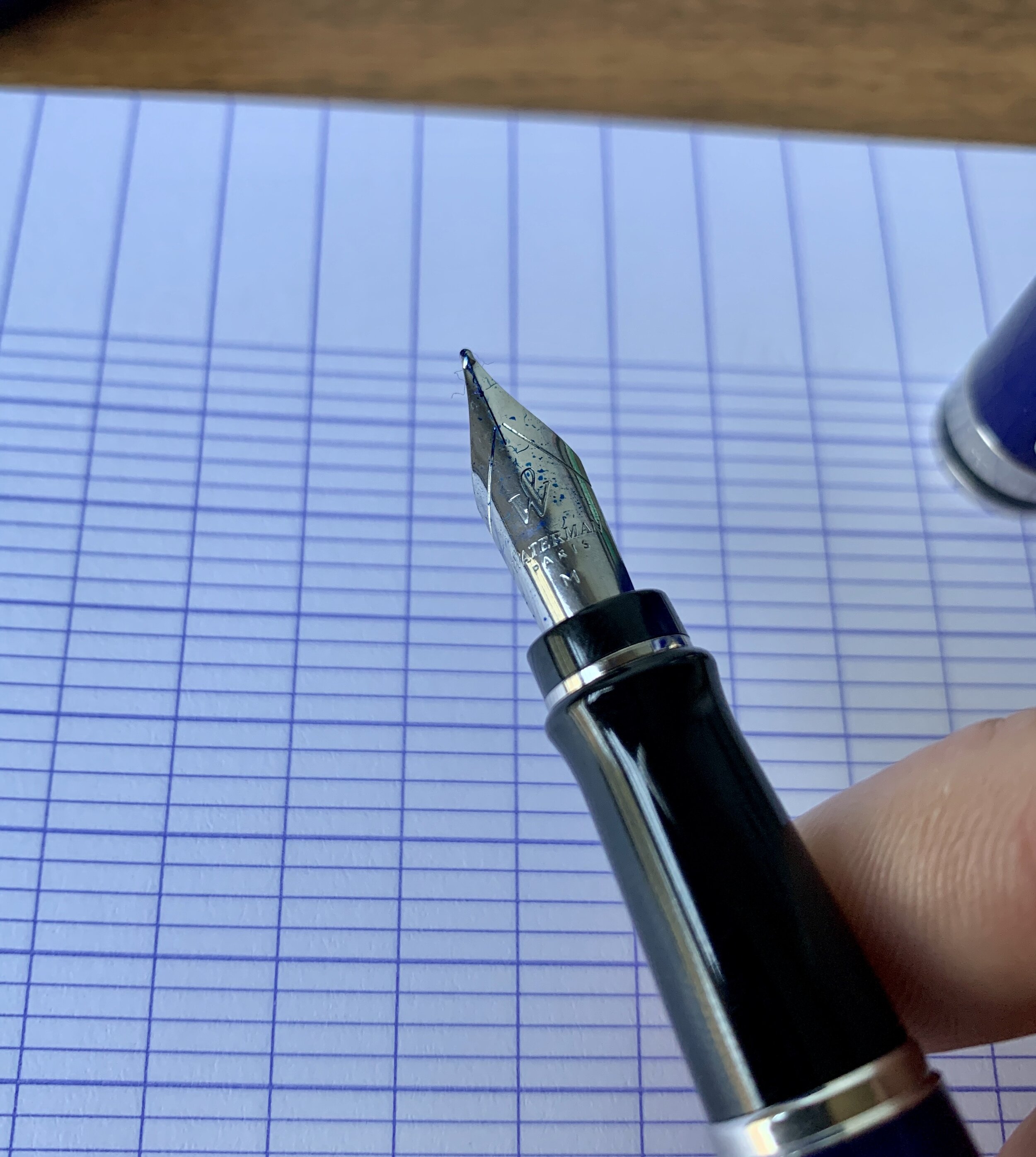One product that makers have tried to perfect over the years, with inconsistent results, is the pocket fountain pen. It’s a hard product to do correctly. Fountain pen filling systems have never been designed for the rigors of pocket carry, and pens holding large reservoirs of ink tend to leak (or “burp”) ink into the cap when the pen gets jostled or there’s a shift in temperature or air pressure. Moreover, many pocket fountain pens end up too small for comfortable longer writing sessions, or feature smaller No. 4 or No. 5 nibs, which for some reason tend to have ink flow and other quality control issues at a higher rate than larger nibs.
The cap threads onto the barrel to post securely. Nearly everyone will need to post this pen to write comfortably.
After perfecting the design on his Classic Machined Pen - an excellent pocket ballpoint - pen and watchmaker Ian Schon set out to develop a true “pocket fountain pen” that he refers to as the “Pocket Six,” because - you guessed it - it features a full-size No. 6 nib. Due to its combination of design, functionality, and ability to accept interchangeable JoWo nib units, I can safely say that the Pocket Six is the best execution of the “Pocket Fountain Pen” concept on the market right now.
For a pocket notebook to go along with your pocket fountain pen, my go-to choice is the Write Notepads Copper Anniversary Edition.
There’s no one characteristic that sets the Pocket Six apart from its competition - it’s an all-around well-designed pen with excellent fit and finish. The selling point that gets the most attention, however, is that namesake No. 6 JoWo nib. Ian specifically designed the cap and section to hold this larger nib, which lives up to its billing in that it generally offers more consistent ink flow and a smoother writing experience than the smaller nibs found on other “pocket” fountain pens. While JoWo nibs are still “stock” nibs and therefore occasionally need tuning, the JoWo nib unit is probably, overall, the most reliable stock nib unit available, and therefore used by most custom penmakers. To have this nib in a pocket fountain pen is a huge plus.
The Pocket Six is so small, closed, that three of them easily fit into my hand at once.
Closed, the Pocket Six is easily “pocketable” at 3.5 inches long. Unless you have tiny hands, or are used to writing with pencil stubs or gripping pens with the ends of your fingers, you’ll need to post the pen to write, and that’s how the Pocket Six was designed, with threads on the end of the barrel to post the cap securely. Fully extended, the pen sits at a comfortable five inches, which for me is long enough to use it for pretty much any writing scenario. While the Pocket Six is a metal pen, Ian uses lightweight aluminum, so even with a brass section I had no issues with fatigue. As you might expect from a pen this compact, it fills with short international cartridges, and since it’s metal, I wouldn’t eyedropper it.
I now own three Pocket Six fountain pens: I picked up my first in at the Philadelphia Pen Show, in a special blue, purple and black anodized finish with a brass section. and recently added two more from Ian’s ongoing “online pen show”: one in “Deep Sheen” (a black and silver mottled finish with dark blue and green “sheen” undercurrents) and another in “Malachite” (a green/blue/grey/brown/black pattern with a real mineral quality to it). Ian also offers standard editions in aluminum, brass, and copper, including a few pens with “hammered” textures both on the body and section. Moving forward, when pen shows resume, I think it’s safe to expect that the Schon DSGN table will become a standard destination, much like Franklin-Christoph, where people can’t wait to see what new prototype colors and patterns Ian has been able to devise.
Takeaways and Where to Buy
As I mentioned earlier, the Pocket Six has quickly become my favorite pocket fountain pen on the market. All three of mine are currently inked and see heavy use on a daily basis. Of my three, the Malachite is my favorite aesthetically speaking, followed by my blue pen from Philly (not sure that it has a name) and the Deep Sheen, but I enjoy every one. I can pretty much guarantee that I’ll be adding one or more new Pocket Sixes annually, since they’re like Kaweco Sports - eminently collectible!
You can purchase the Schon DSGN Pocket Six directly from Ian via his website. Since all pen shows are currently suspended, there’s unfortunately no way to view the pens in person before you purchase, but let’s be honest: I’ve never seen a bad one. If you have been looking for a pocket fountain pen with a reliable nib and a creative design or finish, you absolutely need to give the Pocket Six a try. Prices range from $118 to $135 for an aluminum pen, while brass and copper models can cost more, especially if you opt for the hammered texture which takes more time to finish. These prices are on par with Kaweco AC Sports and Art-Sports, and for the level of workmanship and creativity that goes into these pens, are more than fair.
Disclaimer: I purchased the three fountain pens featured in this review with my own funds, for my own use. I was not compensated for this review.

